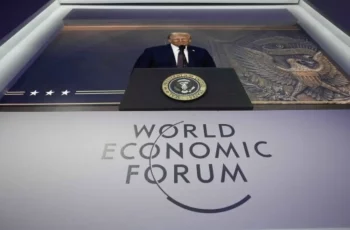
Sanae Takaichi, Japan’s first female prime minister, declared in her inaugural address to parliament her intention to sign a peace treaty with Russia to formally end the state of war lingering since World War II. The statement sparked lively discussions in Moscow: is rapprochement with Tokyo possible given its sanctions policy and the long-standing dispute over the Kuril Islands? We explore what lies behind Takaichi’s words, why the treaty remains unsigned, and how the Kremlin views the situation.
The Kurils: A Perennial Sticking Point
Russia and Japan are the only World War II participants that have not concluded a peace treaty. The reason is a territorial dispute over the Southern Kuril Islands (Iturup, Kunashir, Shikotan, and Habomai), which Japan refers to as the “Northern Territories.” For Tokyo, this is a matter of national pride; for Moscow, these islands are an integral part of Sakhalin Oblast, secured by the war’s outcome and enshrined in Russia’s Constitution.
The dispute traces back to the 19th century. In 1855, the Treaty of Shimoda assigned the Southern Kurils to Japan. In 1875, Russia ceded the entire archipelago in exchange for Sakhalin. After its defeat in the Russo-Japanese War of 1905, Moscow lost Southern Sakhalin, but in 1945, the Red Army reclaimed it along with the Kurils. The Yalta and Potsdam agreements formalized the transfer of the islands to the USSR, and the 1951 San Francisco Peace Treaty required Japan to renounce the Kurils. However, the USSR did not sign the treaty, citing the exclusion of China from negotiations, and Tokyo later claimed the “Northern Territories” were not part of the renunciation.
In 1956, a joint declaration restored diplomatic relations, but the Kuril issue remained unresolved. The USSR offered to return Shikotan and Habomai after signing a treaty, but Japan insisted on all four islands. Talks continued in the 1990s and 2000s, from Yeltsin’s meetings with Hashimoto to Abe’s “economic approach.” Yet, negotiations consistently stalled on the territorial question. After Russia’s special military operation began in 2022, Moscow froze dialogue, canceled visa-free access for Japanese citizens to the Kurils, and labeled Tokyo “unfriendly.” Economic cooperation—from fishing to tourism—has virtually collapsed.
“The Kurils are the outcome of World War II, enshrined in the UN. Revision is impossible,” Russia’s Foreign Ministry has repeatedly stated. Tokyo, however, considers the islands “occupied” and demands a return to the 1855 borders. Without a compromise on the islands, a treaty remains a hollow promise, as Japan insists on their return, which Russia will not accept. According to Japanologist Dmitry Streltsov, despite nationalist rhetoric, the Japanese public is not prepared to fight for the Kurils and remains largely indifferent to the issue. Increasingly, especially among younger generations, people accept that reclaiming the territories is problematic, if not unrealistic: “In general, we must live with the current situation; nothing will change.”

Sanae Takaichi: A Nationalist with Ambitions
Sanae Takaichi, who assumed the premiership on October 21, is a notable figure. The 64-year-old from Nara, a graduate of Kobe University, rose through the ranks of the Liberal Democratic Party (LDP) under Shinzo Abe’s mentorship. An ultraconservative, admirer of Margaret Thatcher and heavy metal, she advocates strengthening Japan’s Self-Defense Forces, revising the pacifist constitution, and tightening immigration policy. In her speech, she pledged to “revive Japanese diplomacy that thrives at the center of the world.”
Takaichi’s stance on Russia is contradictory. She expresses a desire to “resolve the Northern Territories issue and sign a peace treaty” while labeling Russia a “threat” in the Far East, supporting sanctions, and aiding Kiev. Her criticism of Russia’s special military operation earned her a place on Russia’s sanctions list, barring her entry. Her rhetoric echoes Abe’s approach, who pursued personal diplomacy with Putin (27 meetings over 10 years) but achieved no breakthrough.
“The statement about wanting a peace treaty is a ritual phrase,” experts note. “Every Japanese prime minister talks about a treaty, but without concessions on the Kurils, progress is impossible.” However, philosopher Alexander Dugin sees potential: “Japan is weary of Western liberal hegemony. As a right-wing politician, Takaichi could offer a chance for rapprochement. Russia could serve as a bridge between Tokyo, Beijing, and Pyongyang.”
The Kremlin’s Stance: Openness with Reservations
Moscow’s response has been restrained. Presidential Press Secretary Dmitry Peskov emphasized: “We support a peace treaty, but relations with Japan are at a historic low. Tokyo has taken an unfriendly stance, joining sanctions and supporting Kiev.” Deputy Foreign Minister Andrey Rudenko clarified that dialogue is possible only if Japan abandons its “anti-Russian course.” State Duma member Zhurova expressed cautious optimism: “Tokyo may be seeking ways to rapprochement to avoid becoming a pawn in the West’s game”.
The Kremlin has repeatedly offered compromises: visa-free travel for Japanese citizens, joint projects on the Kurils, and fishing quotas. However, these proposals do not satisfy Tokyo, which demands the islands’ return. “We are open to cooperation, but sovereignty is non-negotiable,” Moscow emphasizes.
Is a Breakthrough Possible?
Is Takaichi’s statement an attempt to break the diplomatic deadlock or merely a nod to tradition? Amid global shifts—China’s rise, fatigue with Western dominance—Japan may be seeking balance. Abe showed that personal diplomacy can work, but even his efforts fell short. Today, sanctions, Japan’s membership in QUAD and AUKUS, and its reliance on the U.S. limit its maneuverability. No radical or realistic prerequisites for a shift from a pro-Western course are evident.
For Russia, the Kurils are not just land but a strategic Pacific Fleet outpost and a symbol of the 1945 victory. Economic potential—fishing, tourism, energy—could form a basis for dialogue, but Tokyo persistently returns to territorial demands. As Takaichi balances nationalism and Western pressure, and Moscow awaits tangible steps, the treaty remains a mirage.
Sanae Takaichi calls herself Japan’s “Iron Lady,” but will she have the resolve to rewrite the script followed by every Japanese prime minister? Time will tell, but for now, the Kurils remain an insurmountable barrier to peace.










Comments